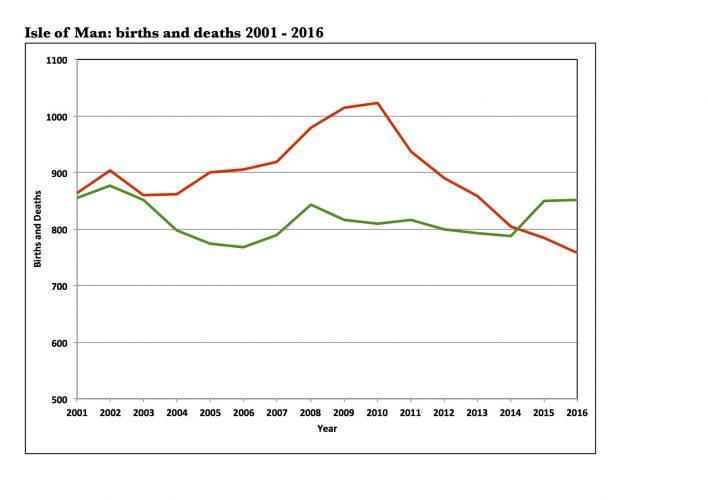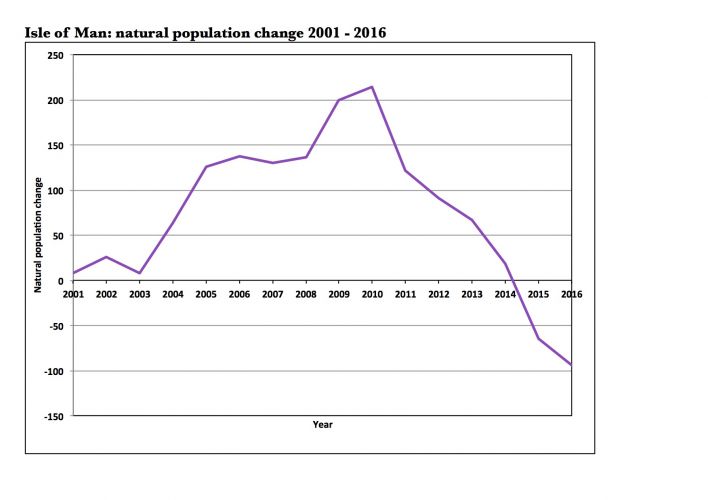Data provided, on request, by the Economic Affairs Unit this week shows that in 2016 the number of births in the Isle of Man fell for the sixth consecutive year. After peaking at 1,023 in 2010, births have fallen very sharply to 758, the lowest number of births in the Isle of Man since 1987. This amount to a 25.9% decline in the number of births in just 6 years.
The 2016 total is 27 fewer than the 2015 total, a fall of 3.4% in one year. The number of deaths recorded in 2016 was 852, just 2 more than in 2016.
The first graph below shows the sharpness of the downturn after 2010 and the extent of the decline. Between 2001 and 2014, births exceeded deaths in every year. In 2015, the number of births fell below the number of deaths.
The second graph shows the natural population change (the difference between the number of births and the number of deaths) between 2001 and 2016. Once again the scale and speed of the decline into natural population decline over the last 6 years is very apparent. In 2010 the excess of births over deaths gave a natural population increase of 214. In 2015 there was a natural decline in the population of 65. In 2016 deaths exceeded births by 94.
The consequences of the falling number of births will be significant. The reduced number of births has already impacted on the retail sector in relation to outlets selling baby goods. Nursery numbers are declining annually. The average year group across the Island's 34 primary schools currently has well over 900 pupils. Five years from now this figure may be below 800 raising the threat of rationalisation and school closure or the opportunity if the reabsorption of nurseries into primary schools. Eventually the declining numbers will catch up with secondary schools and with the employment market.
There are likely to be two causes of such a rapid fall in the number of births in the Isle of Man: i) delaying first pregnancy ii) net migration loss in the 20 - 35 years age group. Both of these may be playing a part and both will be adding to the ageing of the Island's population. In the years since 2010 the Island's economy, as measured by GDP has shown growth in every year. Unemployment has been low. The fall in the number of births is not simply the result of changes in the Island's economy, although there is clear evidence of economic restructuring.
It is much more likely that delaying first pregnancy and net emigration in the 20-35 years age groups are due to a range of socio-economic pressures and a deterioration in the Island's position compared with the UK. Decisions to delay pregnancy or emigrate are made at the level of individual households and key issues might include high nursery costs compared with the UK, concern over nursery access and standards, lower tax allowances than the UK, high costs of housing and transport, high costs of living and increasing taxes such as the sewerage charge as well as more nebulous factors such as a loss of confidence and optimism.
The Programme for Government approved in Tynwald earlier this week has highlighted some of the areas that must be tackled to stabilise general population decline:
- Improve standards and availability of pre-school education
- Encourage and stimulate the return of our graduates
- Grow the economically active population, promoting our Island and its qualities
It is very important that the Island's population issues are not tacked as simply a by-product of policies for economic growth. The population issues we face, including population decline, ageing and falling births, need a coherent approach and a well thought-out population policy.


